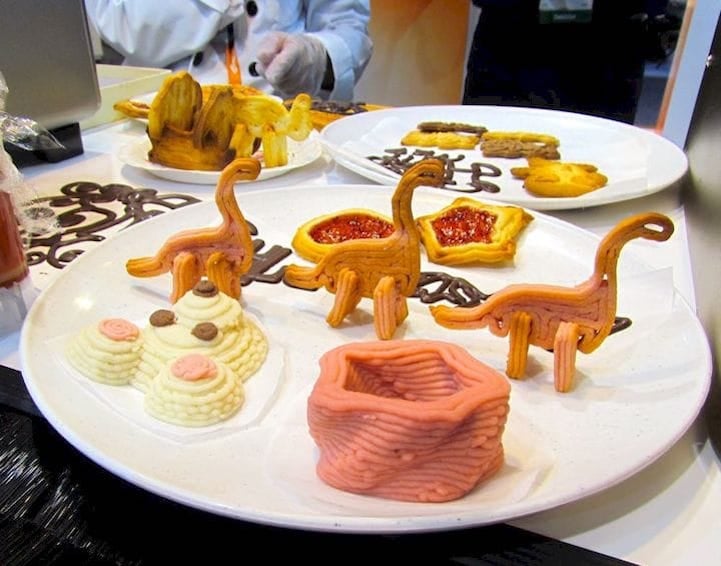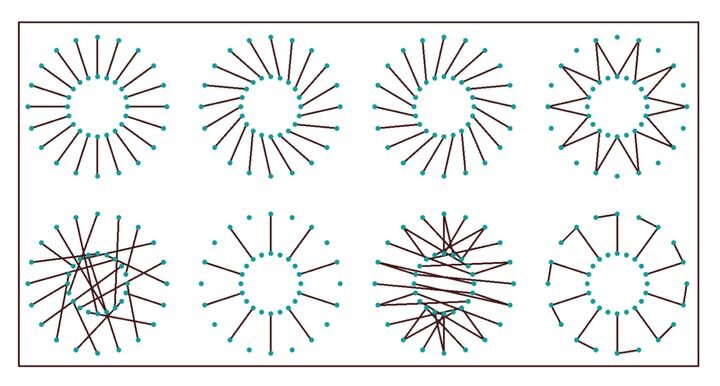![Examples of food 3D prints made by XYZprinting equipment [Source: Fabbaloo]](https://fabbaloo.com/wp-content/uploads/2020/05/image-asset_img_5eb09ddcf1846.jpg)
This week’s selection is “Fundamentals of 3D Food Printing and Applications” by Fernanda C. Godoi, Bhesh R. Bhandari, Sangeeta Prakash and Min Zhang.
This book explores perhaps the most unusual form of 3D printing, that being the printing of food. That discipline is quite different from all other forms of 3D printing where inanimate, solid mechanical or structural objects are created. Instead, food 3D printing aspires to create objects that you literally consume.
This introduces a raft of new factors to consider during 3D printing that are essentially ignored when doing other forms of 3D printing. Food safety aspects are an obvious change, but there are also very different considerations related to materials. A food material may have to not only be edible, but also printable and structurally sound.
It’s relatively easy to modify an existing 3D printer to print “food” by adding a paste extruder. Then, any blenderized food material could theoretically be extruded into shapes. However, you’ll quickly discover that the mush you’re printing isn’t structurally sound and your objects are rather flat. But what if you want to 3D print more complex food shapes?
How exactly do you find or make such a material able to do that? That is one of the questions answered in this near-400-page book. It’s a collection of chapters focusing on different aspects of food 3D printing written by a series of experts, and edited together to form a complete end-to-end view of the discipline.
The book begins, as many 3D print books do, with an overview of the relevant technologies and how they work. However, the difference is that the 3D printing processes are explained as they relate to food production, not production of mechanical objects.
There is a very interesting section describing the different factors that can affect the properties of 3D printed food.
Another interesting chapter describes how you should go about preparing food for 3D printing, something that is virtually never described in any food 3D printer instructions I’ve seen. This includes information on how to select the right kind of food materials, what steps to take to pre-process them, and tips on improving the shelf life of the materials.
Considerable text is spent examining the process of 3D printing chocolate, which might be the most popular food material in 3D printing, perhaps due to its malleability, but more likely because it’s good to eat. Types of chocolate are discussed, as well as the internal structure of chocolate and its rheology.
Business aspects of chocolate 3D printing are discussed, as this is the most likely business started by entrepreneurs reading this book, with some interesting examples of healthcare applications.
Dairy is another food that is examined in depth by this book, as cheese is a popular (also malleable) food substance that is frequently 3D printed by those with paste extrusion systems.
Finally, there is an entire chapter on 3D printed food safety and proper labelling of 3D printed food products. While I’m quite aware of the safety aspects of 3D printing, the idea of labeling food prints is something I’ve not considered. Perhaps this is because other prints don’t require labelling – but food definitely does.
If you’re seriously considering food 3D printing, particularly in a business startup sense, I strongly recommend you review this book.
Via Amazon











This week’s selection is “3D Printing Projects” by Dorling Kindersley, a.k.a. “DK”.